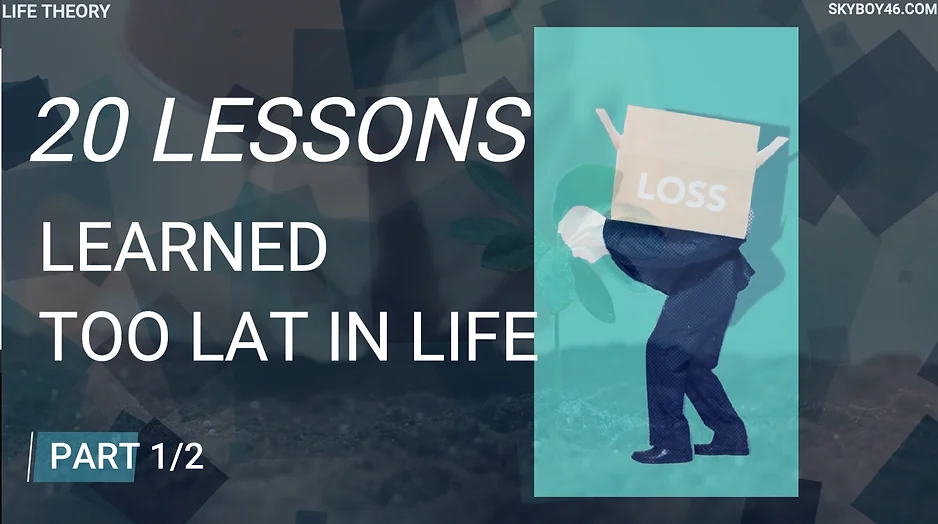What if ancient civilizations hold secrets we’ve yet to uncover? From the myth of Atlantis to the mysteries of Göbekli Tepe, dive into the theories of lost societies and cataclysmic events that reshaped human history. Are we missing pieces of our past, or is the truth buried beneath layers of time and skepticism?
SUBSCRIBE: https://www.youtube.com/@LifeTheory46
VISIT: https://linktr.ee/lifetheory46
Get You Monthly Life Stories in Advance & Our Premium Learning Packs HERE:
The Lost Civilizations: Revisiting Ancient Mysteries
In the annals of history, myths and mysteries often blur together, challenging us to separate fact from legend. Take the story of Atlantis—a civilization said to be half-human, half-divine, dwelling in a utopian society before it fell to greed and arrogance. Their downfall, according to ancient Greek philosopher Plato, was a cataclysmic flood that wiped their grand civilization off the map. But was it just a tale to warn against hubris, or could there be a fragment of truth buried in the myth?
Plato’s account, dated around 600 BCE, claimed that Atlantis existed some 9,000 years before his time. His story isn’t unique; many ancient cultures speak of great floods, their legends stretching back to the Bronze and Neolithic Ages. It’s as if there’s a distant echo from a forgotten era that refuses to be silenced.
One modern voice bringing these echoes to the surface is Graham Hancock, a British author who has written extensively about lost civilizations, including in books like Fingerprints of the Gods. His ideas stir up controversy, with critics branding his theories as pseudoscience. They argue that Hancock’s credentials lack academic weight, going so far as to lock him out of editing his own Wikipedia page. While that may seem extreme, the fact remains—his theories are compelling, even if unconventional.
Hancock posits that a sophisticated civilization was wiped out approximately 12,800 years ago, a time frame that coincides with a significant climatic event known as the Younger Dryas. This was a period when the Earth’s temperature plummeted sharply—by around 5 to 10 degrees Celsius globally—lasting for about 1,200 years before warming up again. Mainstream science recognizes the Younger Dryas, but what caused such dramatic changes remains debated.
One hypothesis, called the impact theory, suggests that fragments of a massive comet struck the Earth during this period, triggering the cooling. Some believe the comet’s impact left a “black mat” of soot across the planet’s surface, marking the beginning of this sudden freeze. Later, as parts of the comet plunged into the oceans, massive waves and greenhouse effects could have helped warm the planet back up, ending the ice age. It’s a scenario that brings to mind the story of Atlantis and its cataclysmic floods.
Hancock isn’t alone in drawing connections between ancient tales and real events. The Neolithic archaeological site of Göbekli Tepe in Turkey, for example, offers a glimpse into humanity’s deep past. With its massive stone pillars adorned with carvings of animals, Göbekli Tepe is considered the world’s oldest known megalithic site, dating back about 11,600 years—coinciding intriguingly with the end of the Younger Dryas. The site shows signs of deliberate burial, with radar scans indicating many more structures lie hidden beneath the earth.
For decades, scholars believed that large-scale architectural achievements like the Great Sphinx of Giza emerged only around 4,500 years ago, linked to the reign of Pharaoh Khafre. Yet Göbekli Tepe, and recent analyses suggesting that the Sphinx could be as old as 7,000 BCE, throw that timeline into disarray. Evidence of precipitation-induced weathering on the Sphinx’s limestone suggests it could have been built in an era when Egypt saw much heavier rainfall than in Khafre’s time. This idea unsettles traditional Egyptology, as it implies advanced societies existed long before we thought civilization began.
Göbekli Tepe seems to emerge from the past fully formed, with no clear evolutionary path leading up to its construction. Archaeologists struggle to explain how people living 11,600 years ago had the capability to build such monumental structures. The traditional view is that human society advanced gradually, with technology and knowledge evolving over millennia. But sites like Göbekli Tepe challenge this linear progression, suggesting either an unexplained leap in human development or the inheritance of skills from a forgotten civilization.
Hancock’s claims about a lost culture meeting a watery end around the Younger Dryas have been met with skepticism, not least because physical evidence remains scarce. Critics often cite the lack of “hard” artifacts—tools, trash heaps, or pottery—typically associated with ancient human settlements. After all, if we can find dinosaur remains from millions of years ago, surely we should be able to locate signs of human activity from just a few thousand years ago. But while these objections hold weight, they do not fully dismiss the questions left unanswered.
Interestingly, evidence supporting Hancock’s impact hypothesis does exist, albeit in subtle forms. Researchers have discovered layers of sediment containing nanodiamonds—tiny structures formed under intense heat and pressure, like that of a cosmic impact. These layers coincide with a geological boundary just before the cooling period and the extinction of several large North American species, including mammoths and the Clovis culture. Some argue that overhunting by humans drove these species to extinction, while others suggest a combination of factors, potentially including cosmic impacts, could be to blame.
Then there’s the matter of rising sea levels during what is known as Meltwater Pulse 1B, which saw significant increases in global sea levels. Hancock’s idea of a sudden 30-foot rise has been met with skepticism; most evidence points to a slower rise over centuries, though the impact of a large comet fragment could have produced temporary surges.
The debate over ancient lost civilizations, such as a possible pre-Diluvian society, raises broader questions about the nature of knowledge itself. We often assume that history is set in stone, but the truth is, our understanding is shaped by those who curate the evidence. Traditional archaeologists and scholars tend to guard their narratives tightly, sometimes dismissing alternative theories with little consideration. Hancock’s arguments, while not always supported by definitive evidence, provoke us to question established viewpoints and entertain the possibility that human history might be far older, and more complex, than we currently recognize.
New findings, however controversial, challenge us to remain open to discovery. Science isn’t a static body of knowledge—it evolves with new evidence, shifting theories as we uncover more of the past. While some may dismiss Hancock’s theories as mere speculation, they do encourage us to keep searching, to keep questioning, and to entertain the possibility that our understanding of history is still incomplete.
In the end, history’s shadows are long, and its secrets are many. As we dig deeper, one truth becomes clear: the past is never quite as far away as we think. The search for answers continues, and as long as questions remain, the journey through time goes on.
–> Read More Life Stories Here:
https://www.lifetheory.us
https://www.lifetheory.eu
Buy all of our Life Stories & Our Premium Learning Packs. Listen or Read to them anytime you want. Have them Forever.
You can get each monthly lesson on our website at https://www.skyboy46.com/store
SHARE THIS STORY
Visit Our Store
SHOP NOW
www.skyboy46.com & www.myskypet.com
Designed For Pet Lovers & Introverted Souls
Sport, Hobbies, Motivation, Music & Art






~EXPLORE MORE~
www.linktr.ee/skyboy46


